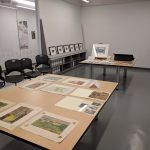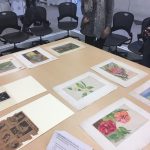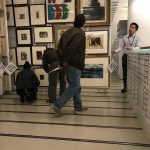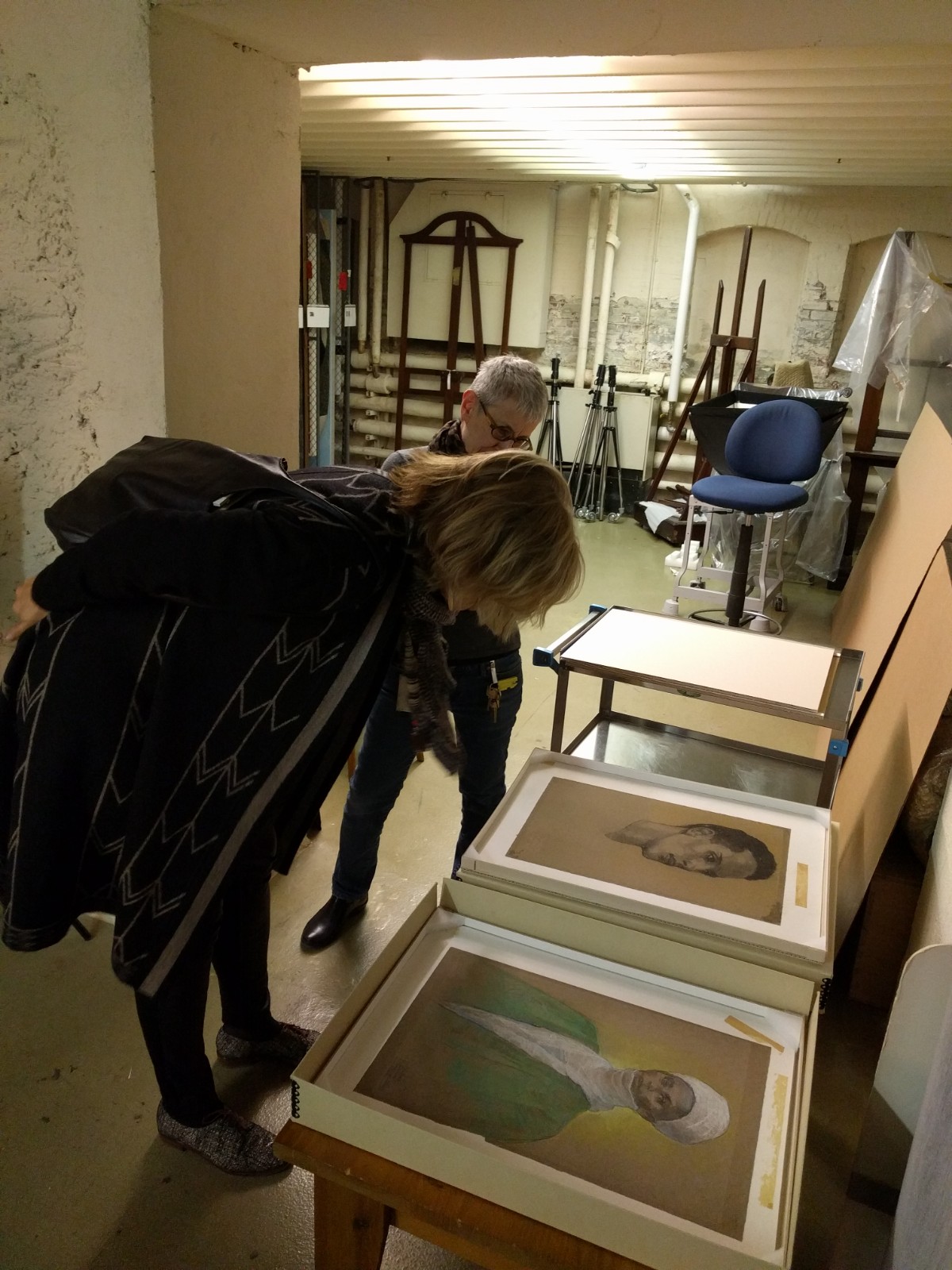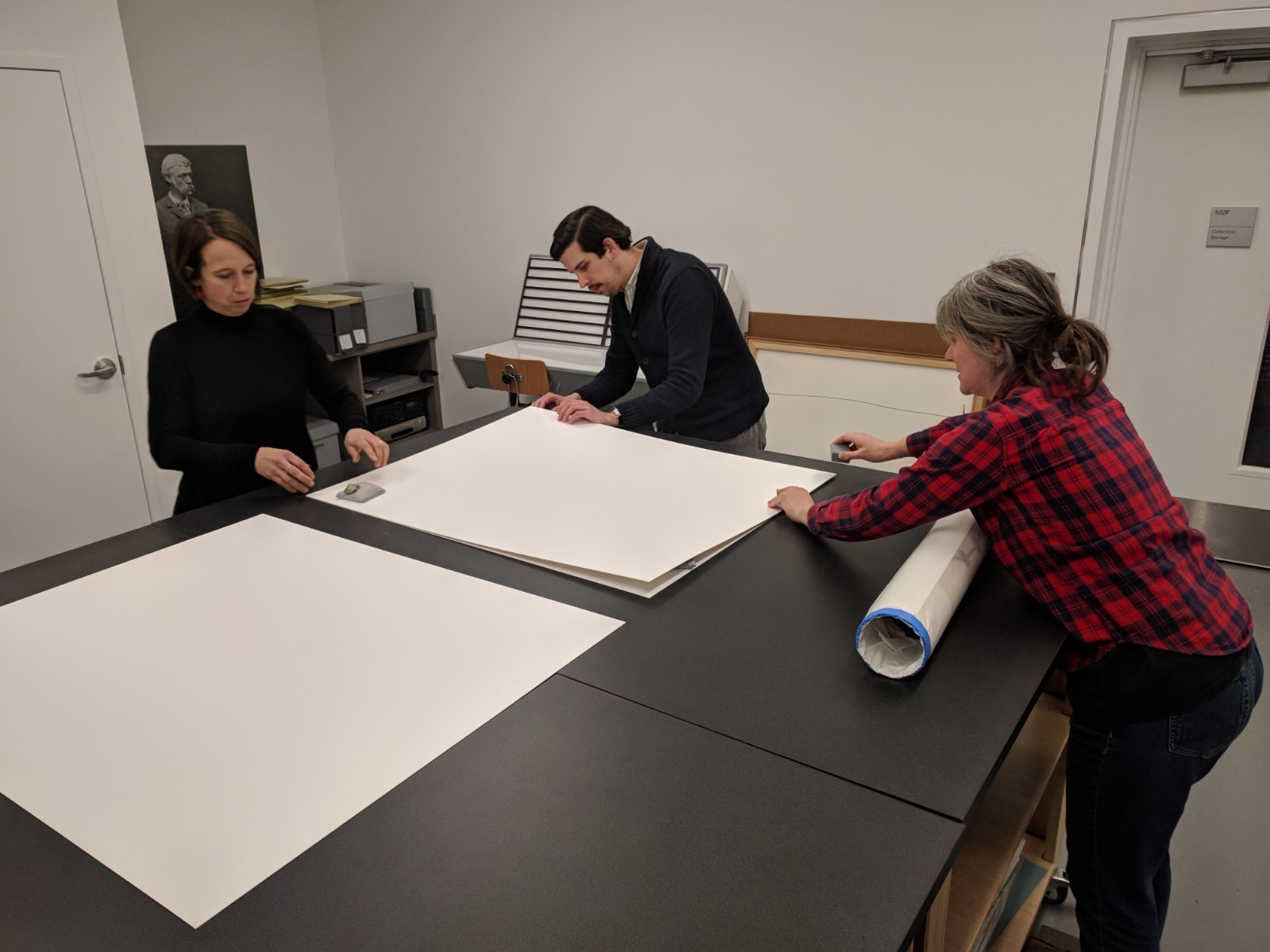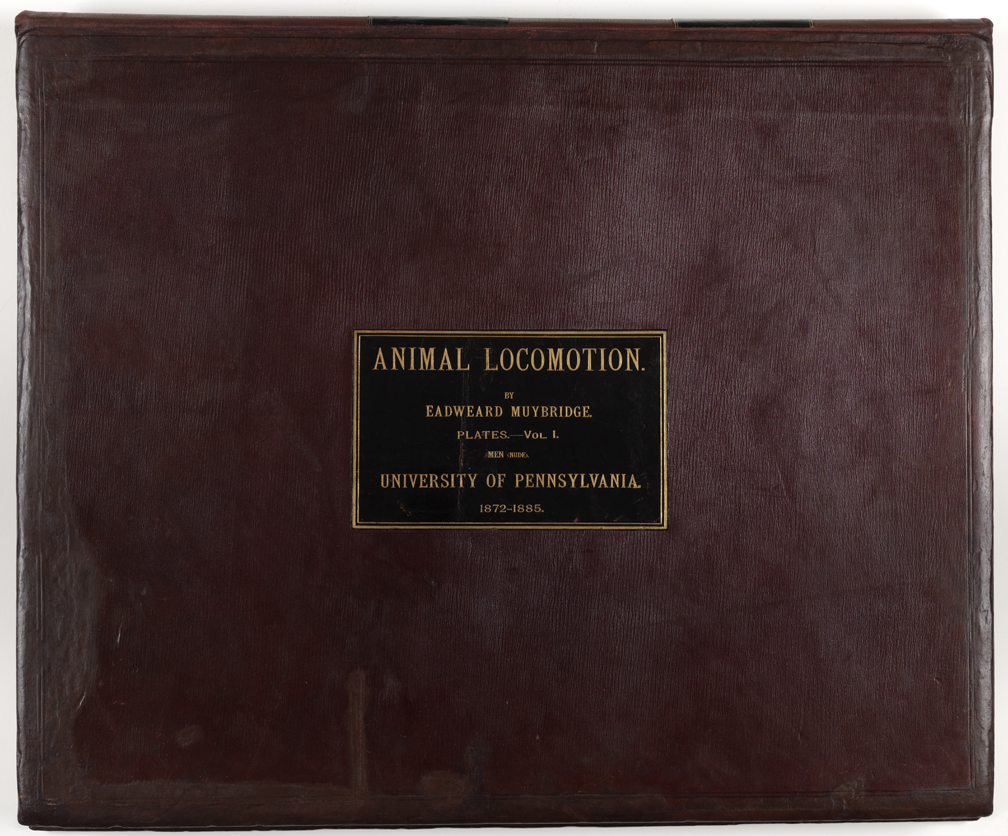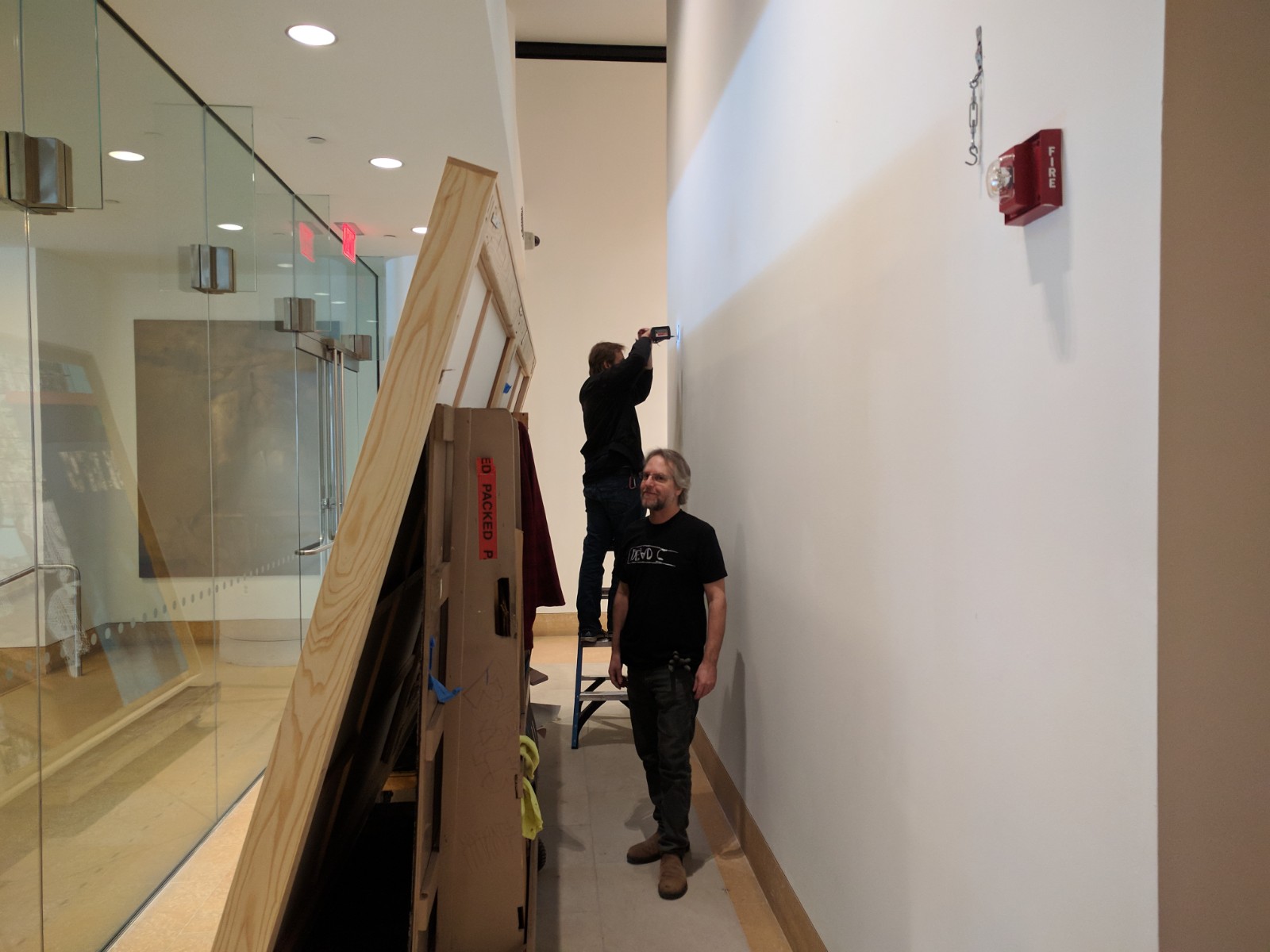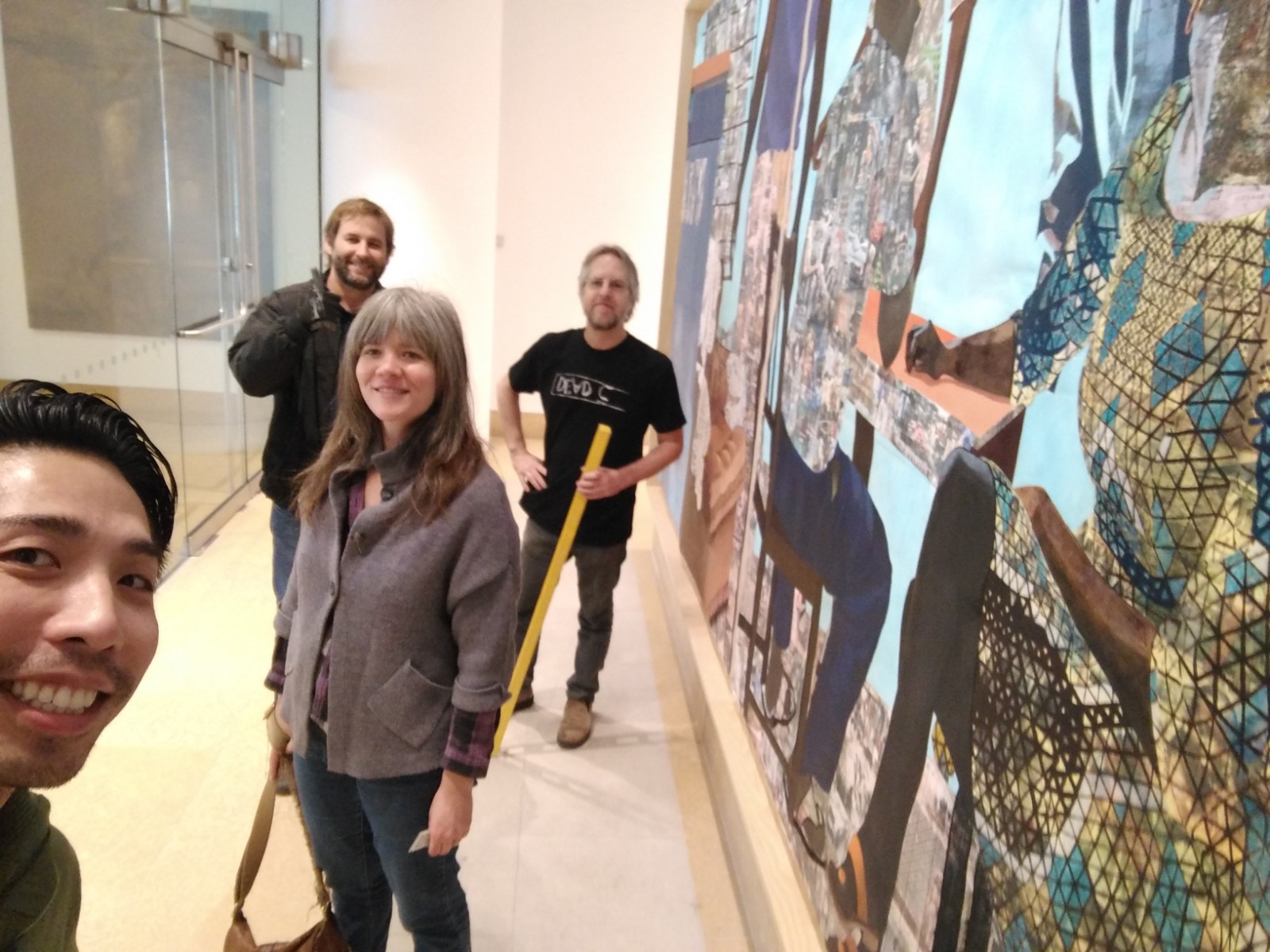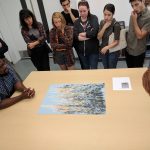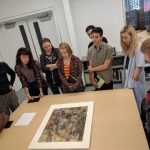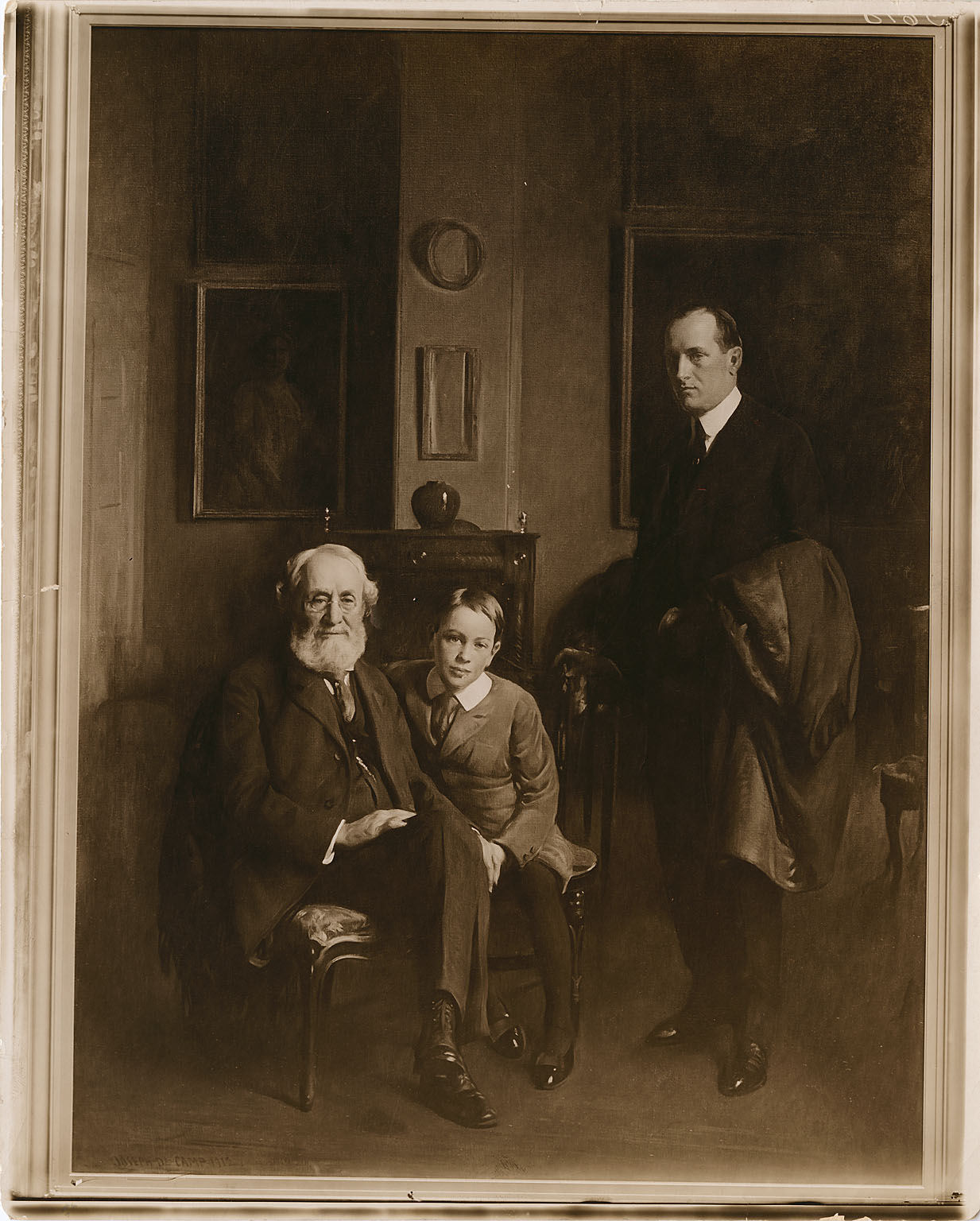Contributed by Hoang Tran, Director of Archives
One of the archives’ primary function is providing scholars access to PAFA’s extensive collections of primary sources. Primary sources are firsthand evidence of historical events. They are generally unpublished materials such as manuscripts, photographs, maps, artifacts, audio and video recordings, oral histories, postcards, or posters. In some instances, published materials can also be viewed as primary materials for the period in which they were written
In collaboration with PAFA’s Museum Education Department, the Center for the Study of the American Artist helped host one portion of a day long professional development workshop connecting art teachers with primary sources that can support classroom topics and promotes the effective use of PAFA’s resources.
The teachers examined works by George Harding, Elizabeth Osborne, Eadweard Muybridge, and Thomas Eakins in our study room. The workshop also included a behind the scenes tour of PAFA’s Works of Art on Paper Storage facility.
For more information on how to schedule classes at the Center for the Study of the American Arist, please visit our website.
Customized professional development opportunities are available through the School of Fine Arts (eowens@pafa.org) and Museum Education (csamson@pafa.org) with ACT 48 and New Jersey credits.
